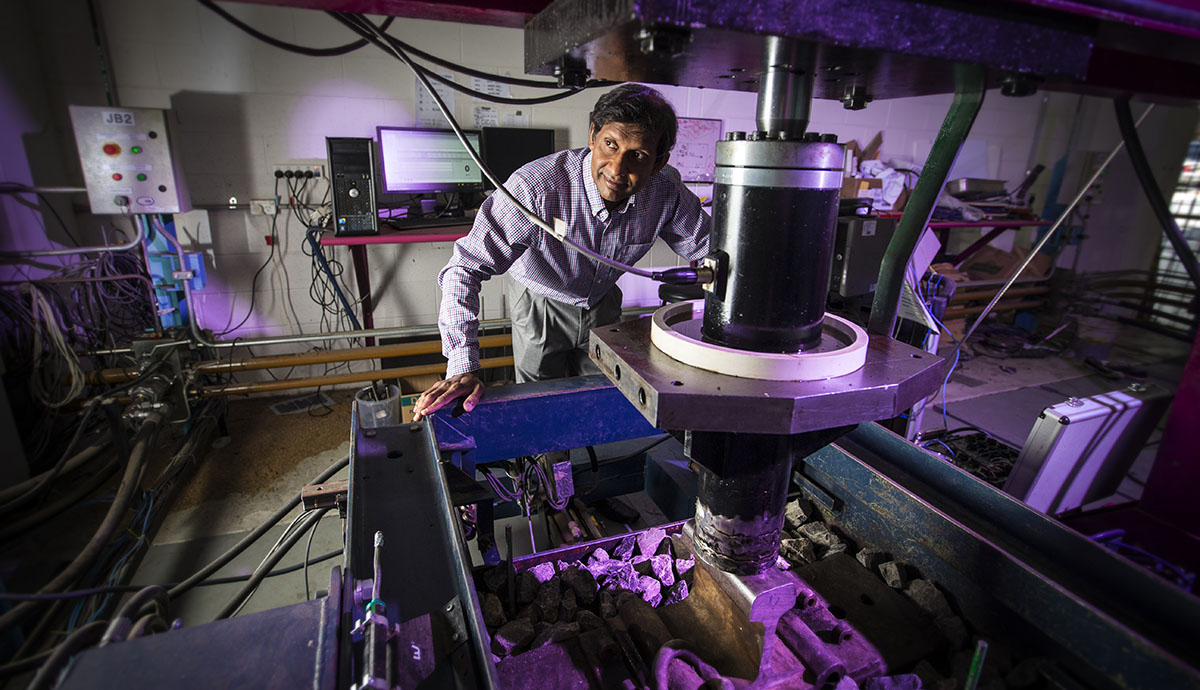January 31, 2017
Researchers to address mud pumping on rail lines
ARC Linkage Project to increase productivity, reduce costs of rail network
Researchers at the University of Wollongong and their industry partners have been awarded Australian Research Council (ARC) funding for a project that aims to increase the productivity and reduce the maintenance costs of Australia’s rail network
Minister for Education and Training Senator Simon Birmingham announced the successful projects under the ARC’s continuous Linkage Projects scheme on Monday (January 30).
The project, led by Distinguished Professor Buddhima Indraratna from UOW’s School of Civil, Mining and Environmental Engineering, received a $675,000 grant, the largest of any of the four successful applications. When combined with funding from the project’s industry partners (Infra Tech, Australasian Centre For Rail Innovation, Geoharbour Group, Coffey Geotechnics, and SMEC Australia) this takes the total funding for the project to almost $1million.
Professor Indraratna is one of Australia’s foremost experts on railway infrastructure and the Foundation Director of the Centre for Geomechanics and Railway Engineering, the country’s first track research centre, established two decades ago. His team will examine the factors that cause “mud pumping” on rail lines and evaluate the effectiveness of drainage to prevent the problem.
Mud pumping occurs particularly in areas where the ground is waterlogged, and causes millions of dollars damage to Australia’s rail network every year. Fast, heavy haul trains - typically those used in mining and agriculture - can cause track depressions and mud holes, increasing the risk of derailment at certain speeds.
“This is a huge problem for heavy haul trains in NSW and around Australia. You get instances where the soil liquefies and pumps up like a fountain,” Professor Indraratna said.
“The potential benefits of this research are immense. The aim of the project is to mitigate this risk. If we can identify the areas at risk and improve the ground conditions, then we can improve the speed of trains.
“At the moment, heavy haul trains go very slowly along vulnerable areas, they are slowing down to 60kmh. If we can improve conditions so that railways are confident to increase the speed of trains up to 100kmh that will make an enormous difference to their operations.”
In NSW, rail network maintenance costs more than $1.5 billion a year, the bulk of which is for repairs to track infrastructure due to instability caused by heavy repeated loads. Severe vibrations due to track instability can also damage rolling stock.
The Australian rail network is one of the largest in the world, with 33,000 km of track carrying in excess of 1 billion tonnes of freight and 850 million passenger trips annually. The demand for safe and reliable tracks to accommodate faster and heavier traffic has been increasing steadily in the past decade, and ongoing improvements in corridor operations and maintenance are essential if the forecast of 6 per cent per annum increase in bulk freight is to be achieved cost effectively.
The ARC Linkage Projects scheme promotes national, and international, collaboration and research partnerships between key stakeholders in research and innovation including higher education institutions, government, business, industry and end-users. Research and development is undertaken to apply advanced knowledge to problems, acquire new knowledge and as a basis for securing commercial and other benefits of research.
